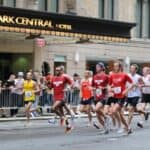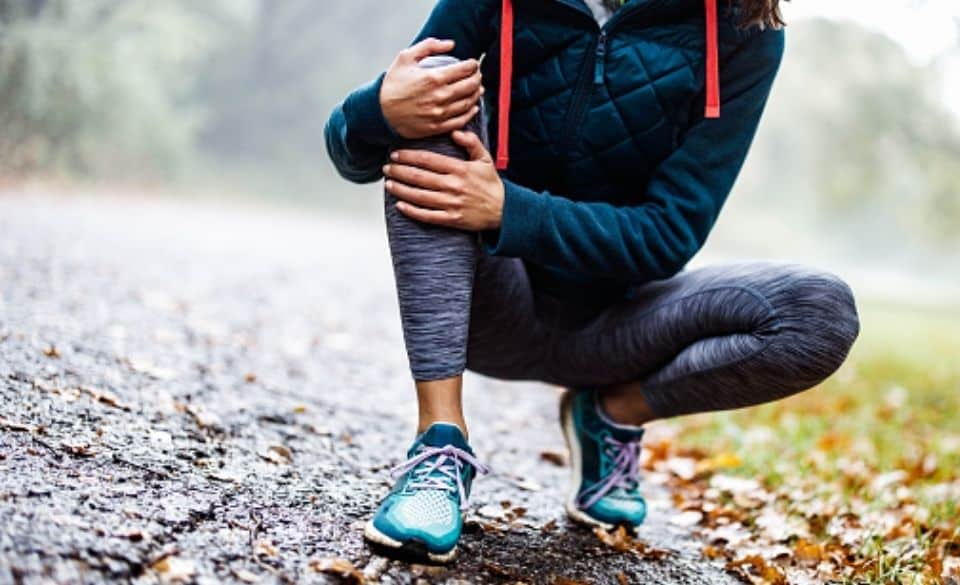
Most Common Runners Injury – Knee, Hip & Groin Pain While Running
Page Contents
- Running Knee Injuries & Pain – Guide to Running Injuries
- Patellar Subluxation – What Causes It?
- Torn Meniscus From Running
- Running Injuries Hip & Groin Pain
- Causes of Hip Pain While Running
- Upper Hamstring Injury From Running
- Sprain Versus Strain – Difference Between Strain & Sprain
- Running Foot Injuries & Pain – What You Should know?
- Plantar Fasciitis & Achilles Tendonitis
Running is a fun and rewarding sport, but with reward comes sacrifice, and the sacrifices we make are dealing with niggles and injuries. While the injury you may pick up might not be the most common runner’s injury, but you can guarantee that you will pick up one at least once in your running career. Knowing some of these common running injuries can help you prevent them from happening.
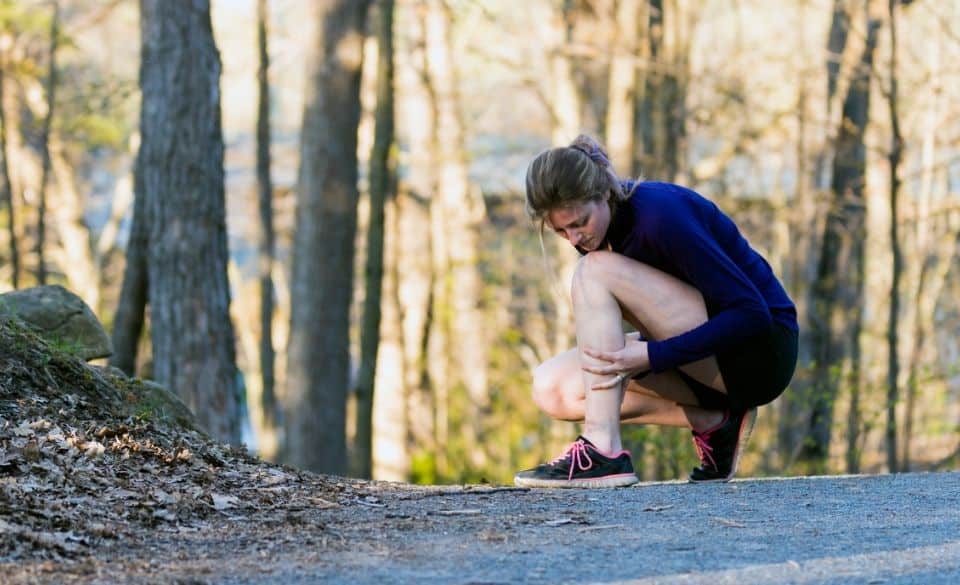
Running Knee Injuries & Pain – Guide to Running Injuries
We all have running knee injuries and pain at some point since we use them almost constantly. If you run or jog regularly, your knees can take a constant beating and the additional stress of running is not without risks.
There are a lot of knee injuries you can get from jogging one is known as even called “Runner’s Knee”. This is one of the most most common runners injury people get.
Runner’s Knee is best described when the cartilage under your kneecap starts to wear out. It happens when your kneecap is not sliding over the surface of your knee properly. It happens during running as tendons, muscles, or bursas (fluid sacs) become swollen or otherwise irritated. It is a very common problem and easily treated by Flexcin. Flexcin has been proven to be a sort of “super glucosamine” since it was brought into the spotlight by the National Institutes of Health.
Runner’s knee can be caused by a lot of different circumstances. For example, ff your feet rotate the wrong way when they impact the ground, it could cause the cartilage to wear out over time.
It can also occur if you jog on uneven surfaces or steep inclines and even running on cambered surfaces. Other issues can be caused by overpronation (when the feet rotate too far inward on impact) which can cause the kneecap to twist sideways.
Even weak quadriceps can play a part in causing running knee injuries and pain. The quadriceps muscle assists in the proper tracking of the kneecap. Weakness, especially in the inside part of the quadriceps, can prevent the kneecap from tracking, thus affecting muscle balance.
Otherwise, simple things like incorrect or worn running shoes can commonly cause runner’s knee and other running knee injuries and pain.
Patellar Subluxation – What Causes It?
Patellar Subluxation is a term for when your patella (kneecap) slides out of the groove that it’s supposed to slide in. That groove is known as the trochlea. When your patella and your trochlea are not acting in tandem it can be a painful and debilitating feeling.
There are a couple of levels of Patellar Subluxation, but in some cases, your kneecap might just be a little unstable. This can cause it to slide from side to side too much when running. That can be a strange sensation, but it’s not always painful. On the other hand, though, if your kneecap pops totally out of joint the pain can be excruciating.
Symptoms of patellar subluxation can include a sickening popping noise while running. As a runner, though, you’re likely to experience it because of a specific event, like tripping or falling.
When you fall, your knee might twist, popping your patella out of its groove. Once this has happened once, it’s likely to happen again. During the first couple of months after the initial injury, it’s common that it continues to pop out. This is because the cartilage keeping it in place is weakened. Even though this is not the most common runners injury, it is still common within high mileage runners and joggers.
Torn Meniscus From Running
Speaking of cartilage, there’s a c-shaped piece called the meniscus that, if torn, can be a major problem. Many joints have a meniscus, but the knee joint is the one that seems to suffer the most from meniscus tears.
A torn meniscus from running can be painful. It can also cause your knee to lock up or give right out under you. It feels a bit like your knee bends to a certain point, then gets stuck for a moment, and then gives entirely.
As with other jogging injuries, meniscal tears are usually caused by repetition or by a sudden injury or twist.
There are many possible ways to injure your knees while jogging, aside from those mentioned. However, the result is usually the same and it can take weeks or months for a knee injury to heal. Thus preventing you from enjoying your daily run for a while.

Running Injuries Hip & Groin Pain
Running or jogging can take a toll on your body, especially when causing running injuries to the hip and groin. Even though hip injuries aren’t in category of the most common runners injury, it still affects runners more frequently than you think.
If you don’t warm-up or cool down properly after a run, you’re just an injury waiting to happen. The following hip and groin injuries are just a couple of the problems you might encounter while following your regular training plan.
Causes of Hip Pain While Running
Known as a ball and socket joint, there is a series of muscles, tendons, and bursas that move your femur within your hip socket. If any of those components become compromised, you could experience a dull ache to a sharp stabbing pain in the hip. Alternatively, if you experience severe pain, you might experience a total inability to walk in the worst cases.
Of course, wearing the wrong running shoes, running on the wrong surfaces and technique can all play a role in hip pain while running.
Hip pain while running can also be caused by repetitive stress and is more common with high mileage runners.
There’s also unexpected things that can happen, such as tripping over or falling while running. When this happens it could not only cause you to injure your hip while running but even cause other injuries.
Hip Bursitis – What is it?
In terms of specific running hip injuries, hip bursitis is a common injury for the runner.
Hip Bursitis is usually caused by repetitive wear and tear, and not from a traumatic blow. The repetitive motions of running can cause the bursa (fluid sac) that cushions your bones to become inflamed.
If this happens to you, supplements like Flexcin can help provide some relief and recovery to the injury. Otherwise, you should plan to visit your doctor if the symptoms cause too much pain.
If your hip bursitis flares up, you’ll know it. In those cases, you’ll experience stabbing pain any time you try to move either your hip or your leg.
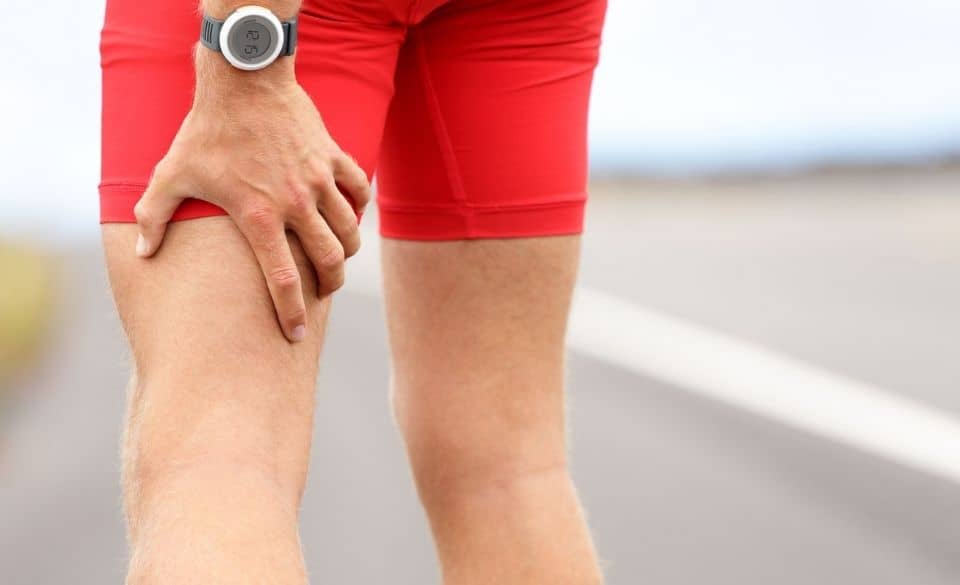
Upper Hamstring Injury From Running
You might think of the hamstring as being a part of your leg than a part of your hip, but the two are connected. And any injury to your lower body can affect your gait (running technique), thus causing an upper hamstring injury from running.
Upper hamstring injuries from running can also cause your hips to be overly stressed or twisted in strange ways. So, you can experience any number of injuries in the hamstrings and not just the upper hamstrings.
Sprain Versus Strain – Difference Between Strain & Sprain
There are two main ways that you could injure your upper hamstring while running. One is a strain and the other is a sprain. The difference is that a sprain is a ligament injury, while a strain is a muscle or tendon injury. Strains are the most common runners injury out of the two, and one in every 30 runners experience this type of injury.
Strains come in three different types, 1st through 3rd degree, with 3rd being the worst. Any type of strain will cause you pain and even some swelling. The 3rd-degree strains are the injuries that can put a damper on your running routine. They can cause a lot of swelling and pain and make it almost impossible to walk. Not only that, but the pain and swelling could travel to your leg, as well as your hip region.

Running Foot Injuries & Pain – What You Should know?
Running foot injuries and pain while running is, unfortunately, a common problem, and the same goes with delayed foot pain after running. Sometimes it can take until the morning to even notice the pain and it may only be a dull ache.
Most running foot injuries are caused by overuse which is a common occurrence within runners. When you perform the same action over and over as you do with running, it can put excess strain on your feet. Repetitive motion injuries like this are not usually serious and can be dealt with fairly quickly.
.
There can be more serious problems though such as muscle strains and sprains, as well as ligament tears. All of these can be caused by foot ailments that you could have, as a runner.
A strain is, basically, an over-stretched muscle. A sprain is when the muscle becomes torn. Either condition can be very painful, but a sprain usually takes quite a bit longer to heal.
Plantar Fasciitis & Achilles Tendonitis
Another problem you could face as a runner is Plantar Fasciitis, which is caused by the tissue under the foot becoming swollen or inflamed. The most common reason behind Plantar Fasciitis is caused by excess running and is common within heel strikers and high mileage runners.
The inflammation of the bottom of your foot is called Plantar Fasciitis. Unlike muscle sprains, Plantar Fasciitis usually heels quicker, and changing shoes or wearing padded socks can reduce symptoms quickly.
Plantar Fasciitis is always worst in the morning the day after a run and often feels better during the evening. The trouble with most runners though they keep running it often re-aggravates the problem rather quickly.
Tendinitis in the Achilles tendon or another tendon in your foot can be another cause of pain after running. Tendinitis is the irritation or inflammation of a tendon and is often caused by repetition or overuse. It also depends on how “well oiled” you keep your joints, tendons, and ligaments. The anti-inflammatory properties of CM8 help ensure smooth joint area mobility, which is one of the reasons we so strongly endorse it.
One of the big causes of foot pain while jogging isn’t actually what you do, it’s what you wear. Certain shoes are designed for certain purposes. The type of technique you have and the shape of your foot will dictate what type of running shoe you will need. This may be either a shoe designed for overpronation, supination, or if your lucky a neutral shoe. If you pick the wrong type of shoe for your biomechanics you may find this causes foot pain while you run.
We all have different shaped and sized feet. Our arches might be high or flat. Our feet might be wide or narrow. Too many people just pull a pair of shoes off the rack, and if they are the right size, take them home.
Since running puts extra stress on your feet, take the time to visit a professional sports store and running analysed. This way you can get the RIGHT shoe and one that fits your feet perfectly. Remember wearing the wrong running shoes can be a certain path to high medical bills.
One last thing to mention: If you’re having foot pain while running, avoid the use of ankle weights. A lot of people want to try to give themselves a better workout by adding weights. Ankle weights will just serve to stretch and tear your tendons more. So, it’s best to avoid them, if you want to limit your chances of injury. Certainly, if you insist on trying this, do so only under the watchful eye of a certified running coach. Otherwise, you are “putting out the welcome mat” to running foot injuries & pain!
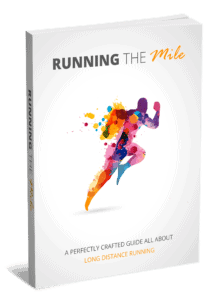

Download Running the Mile for only 8usd
“A Know-all Short Report All About Long Distance Running”



